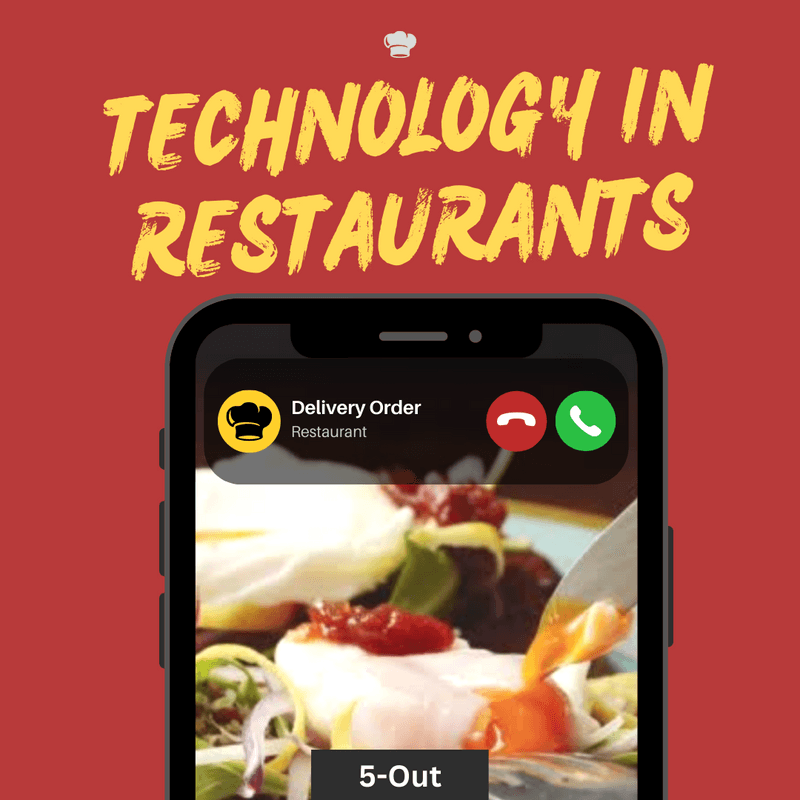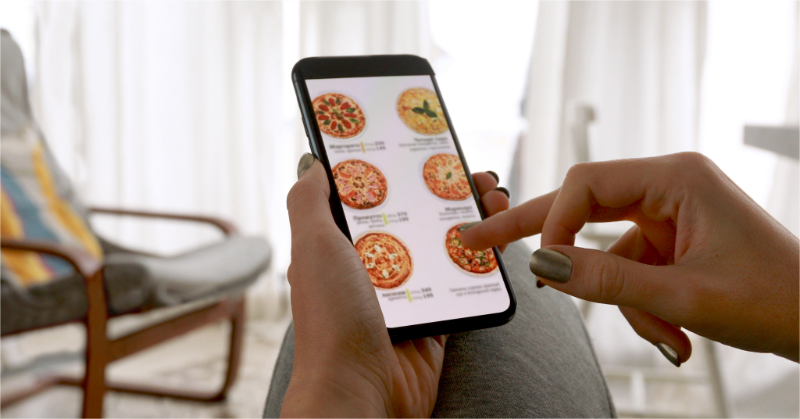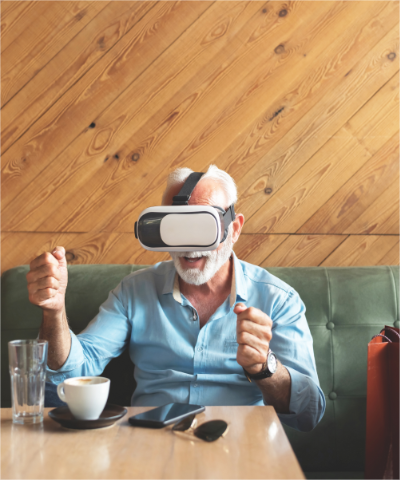The Role of Technology in Restaurants
- Michael Jones

- Jun 28, 2023
- 8 min read
Explore the role of technology in restaurants, from AI to mobile tech. Understand how tech innovations are shaping the future of the restaurant industry.
Restaurant Technology

As we find ourselves in an era where technology has permeated every aspect of our lives, the restaurant industry is no exception. From the moment we consider dining out to the minute we walk out of a restaurant after a satisfying meal, technology plays a vital role in shaping our experiences. The traditional view of a restaurant as merely a brick-and-mortar space to share a meal has been dramatically transformed by the onset of technological advancements.
Today, dining has evolved into a seamless, integrated experience, marrying the sensory delight of food with the convenience of technology. The transformation is so profound that restaurants and technology now seem to have a symbiotic relationship. Whether it's through online reservation systems, digital menus, mobile payments, or even AI-based services, restaurant technology has fundamentally changed the way we dine. This blog will delve into the fascinating interplay between technology and restaurants, exploring how the former is reshaping the latter, creating dining experiences that are as innovative as they are enjoyable.

The Impact of Digitalization on the Restaurant Industry
The advent of digital technology has brought about a paradigm shift in the restaurant industry. The digital revolution, spearheaded by the rise of the internet, smartphones, and cloud computing, has changed the way restaurants operate and interact with customers.
Examples of Digital Restaurant Tech
Perhaps the most significant impact of digitalization has been the emergence of the online ordering and food delivery platform and the online table reservation system. Food delivery services like Uber Eats, DoorDash, and OpenTable have transformed the restaurant landscape, making it possible for customers to order food or reserve a table with just a few clicks. Digital menus, often available through QR codes, have replaced traditional paper menus in many restaurants, allowing for easy and quick updates, customization, and even translation into different languages.
Mobile payment systems are another significant digital innovation that has streamlined the dining experience. Applications like Apple Pay, Google Wallet, and Square have made it possible for customers to pay for their meals without cash or card, leading to faster transactions and increased convenience.
However, the impact of digitalization extends beyond these obvious changes. Social media platforms like Instagram and Facebook have become essential marketing tools for restaurants, enabling them to reach a wider audience, engage with customers, and build their brands. Review platforms like Yelp and TripAdvisor have created a new form of word-of-mouth marketing, influencing customer choices and prompting restaurants to maintain high-quality service.
Challenges of Restaurant Technology
But digitalization is not without its challenges. While digital technologies offer countless benefits, they also require significant investment in infrastructure, software, and training. Cybersecurity is another major concern as more business functions move online. The need to maintain a robust and secure digital infrastructure is paramount in order to protect customer data and financial information.
Furthermore, the fast-paced nature of digital technology means that restaurants must continuously adapt to stay relevant. From integrating new payment methods to updating online platforms, staying ahead in the digital game requires constant effort.
Despite these challenges, it's undeniable that digitalization has brought immense benefits to the restaurant industry. It has made dining more convenient and enjoyable for customers while offering restaurants new ways to improve their operations and reach a broader audience. As we continue to navigate the digital era, it's exciting to imagine how future technologies will further shape the restaurant industry.

The Role of Mobile Restaurant Technology
As smartphones have become an almost inseparable part of our lives, their impact on customer behavior and expectations in the restaurant industry cannot be overstated. Customers now desire to have information at their fingertips, and the ability to perform various actions like reserving a table or ordering a meal using their smartphones. This shift has forced restaurants to rethink their strategies and integrate mobile technology into their operations.
Examples of Mobile Technology
Restaurants are leveraging a variety of mobile technologies to meet customer expectations. Mobile applications developed by restaurants or third-party providers enable customers to browse menus, make reservations and online orders, place orders for takeout or delivery, and even make payments. These apps often incorporate loyalty programs, where customers earn points for each purchase, which can be redeemed for discounts or free items, thereby encouraging repeat business.
QR codes have also emerged as a significant mobile technology in restaurants. By scanning a QR code with their smartphone, customers can access digital menus, place orders, or make payments. This technology gained significant traction during the COVID-19 pandemic when minimizing physical contact became a necessity.
Contactless payment methods, facilitated through mobile wallets like Apple Pay or Google Wallet, have increased in popularity due to their convenience and speed. With a simple tap of their smartphone, customers can settle their bill, thereby reducing the wait time and improving the overall dining experience.
Case Studies
To illustrate the effective use of mobile technologies, let's consider a few case studies. Starbucks is a prime example of a restaurant brand that has effectively utilized mobile technology. Their app, which allows customers to order and pay ahead, and collect rewards, has been a tremendous success. As of 2021, it had over 21 million active users and accounted for approximately 40% of the company's US sales.
Another example is Domino's Pizza. Domino's has been a pioneer in using technology to enhance customer experience. Their mobile app allows customers to customize their pizza, track their orders in real time, and even use voice commands to place orders. Their "Domino's Hotspots" initiative enables customers to get their pizzas delivered to non-traditional locations like parks and beaches.

AI and Robotics in the Restaurant Industry
As we delve further into the age of digitalization, Artificial Intelligence (AI) and robotics are becoming increasingly prevalent within the restaurant business. These technologies are not merely futuristic concepts; they are active parts of today's restaurant operations, from the kitchen to customer service, significantly transforming the dining experience.
Applications of AI and Robotics
The applications of AI and robotics within the restaurant industry are numerous. For instance, automated cooking machines and robotic chefs are making their way into the kitchens. These advanced machines can perform a variety of tasks, from flipping burgers to making perfect salads, with consistent precision and speed. Notable examples include Flippy, a burger-flipping robot developed by Miso Robotics, and Sally, a salad-making robot by Chowbotics.
AI also comes into play in the form of chatbots for customer service. These chatbots can interact with customers, take orders, answer queries, and even provide personalized recommendations, all in real-time and without human intervention. Restaurants are also using AI to optimize operations, like inventory management software and sales forecasting tools, reducing waste, and improving efficiency.
Robotics in restaurants isn't limited to behind-the-scenes operations. Robotic servers and bartenders have been introduced in several restaurants worldwide. These robots can deliver food and drinks to tables, mix cocktails, and even interact with customers, providing a unique dining experience and increasing customer satisfaction.
Benefits and Drawbacks of Leveraging AI
While the benefits of AI and robotics are substantial, ranging from increased efficiency and reduced operational costs to unique customer experiences, there are also potential drawbacks to consider. A significant concern is the displacement of human labor, as machines could replace jobs traditionally performed by humans. Additionally, the high initial investment in these technologies could be a barrier for smaller restaurants.
There's also a concern about the loss of the human touch, an integral part of the hospitality industry. While robots can provide consistency and efficiency, they lack the personal interaction and emotional intelligence that human staff offer. Balancing the use of technology with the need for human connection will be a critical challenge for restaurants in the future.

5-Out: Harnessing AI and ML for Sales Forecasting in Restaurants
In an industry where margins are often slim and success depends heavily on careful planning and efficiency, having accurate sales forecasts can be a game-changer. This is where 5-Out, an AI and Machine Learning (ML) driven sales forecasting software for restaurants, comes into play.
5-Out utilizes advanced AI and ML algorithms to analyze a restaurant's historical sales data, along with other factors such as weather, local events, holidays, and even social media trends. The system then uses this information to predict future demand with an astounding accuracy rate of up to 98%.
But 5-Out goes beyond just predicting sales. The software also provides actionable insights and recommendations based on its forecasts. For example, it can suggest optimal labor scheduling based on predicted customer footfall. This means restaurants can schedule their staff more effectively, ensuring they have enough manpower during peak times and avoiding unnecessary labor costs during quieter periods.
In terms of inventory management, 5-Out can also guide restaurants on what and when to purchase based on the forecasted demand. This can significantly reduce food waste and inventory holding costs, leading to improved efficiency and profitability.
Furthermore, 5-Out's use of AI and ML means the software continues to learn and improve its forecasts over time. As it collects more data, it fine-tunes its predictive algorithms, resulting in even more accurate and reliable forecasts.
In summary, 5-Out represents the power of AI and ML in transforming restaurant businesses. By accurately predicting future demand, it allows restaurants to optimize their operations, leading to cost savings, improved efficiency, and ultimately, higher profitability. The use of tools like 5-Out illustrates the incredible potential of AI and ML within the restaurant industry and their role in shaping its future.
Book a demo today to leverage AI forecasting technology for your restaurant!

The Future of Technology in Restaurants
As we look to the future, it's clear that technology will continue to play an instrumental role in shaping the restaurant industry. As new technologies emerge, they offer exciting possibilities for further innovation and transformation.
One of the promising restaurant technology trends is Virtual Reality (VR). Though its application in the restaurant industry is still in its nascent stage, the potential is vast. From virtual tours of the restaurant for prospective customers to VR-based training programs for staff, the possibilities are boundless. In the future, we might even see restaurants offering VR dining experiences, where customers can enjoy their meals in a virtually created environment of their choice.
Blockchain technology, known for its role in cryptocurrencies, also has potential applications in the restaurant industry. For instance, it can provide a secure and transparent way of tracking food from farm to table, enhancing food safety and traceability. Additionally, blockchain could facilitate secure, quick, and transparent transactions, improving the efficiency of payment processes.
The Internet of Things (IoT) is another technology with significant implications for the restaurant industry. IoT devices can help monitor and control various aspects of restaurant operations, from inventory management to energy consumption. Smart appliances can communicate with each other and with management systems, optimizing efficiency, and reducing costs.
As these technologies begin to make their mark, restaurants must proactively prepare to adapt. This involves not only investing in new technologies but also in training staff to use them effectively. Restaurants should also consider partnering with technology providers to stay ahead of the curve and gain access to the latest innovations.
While integrating these technologies, it's crucial for restaurants to remember that technology should enhance, not replace, the dining experience. No matter how advanced technology gets, the fundamental aspects of hospitality - excellent food, attentive service, and a welcoming atmosphere - should always remain at the core of the restaurant experience.
In conclusion, in a fast-paced and competitive industry like food service, restaurant owners having the right technological tools can make all the difference. The 5-Out sales forecasting software offers restaurants a cutting-edge solution that harnesses the power of AI and ML. By providing highly accurate sales forecasts and actionable insights, 5-Out empowers restaurants to optimize operations, reduce costs, and ultimately enhance profitability.
No matter the size of your restaurant, whether you are a small local eatery or a national chain, you can benefit from the precision and efficiency that 5-Out offers. Request a demo today!



Comments